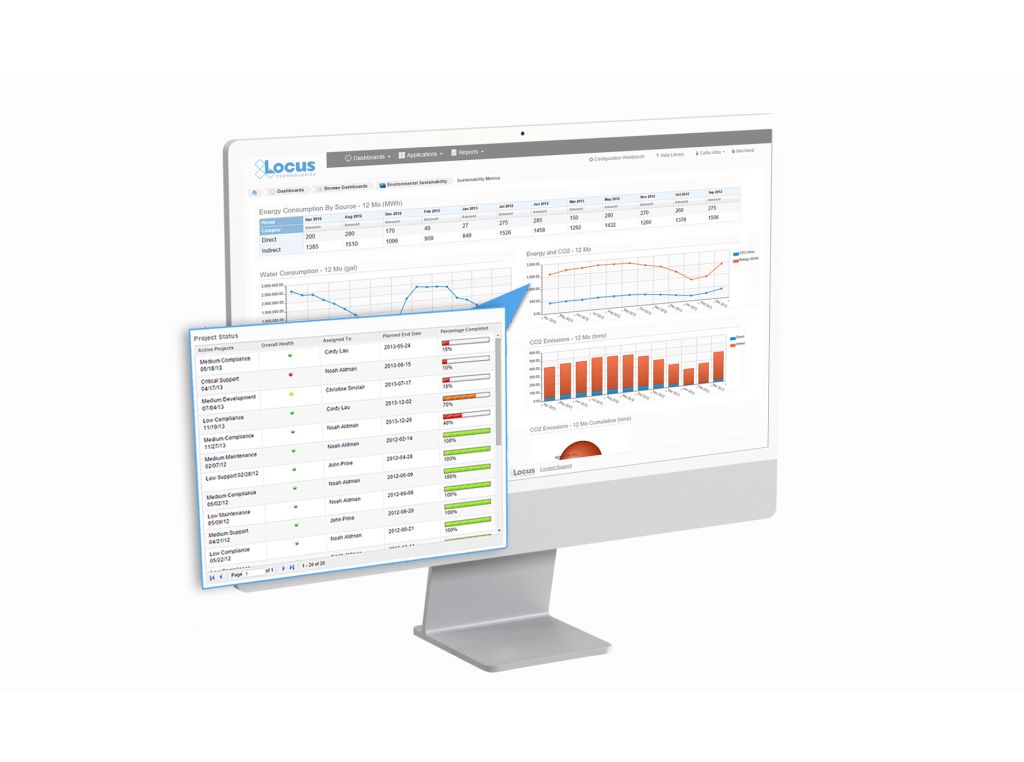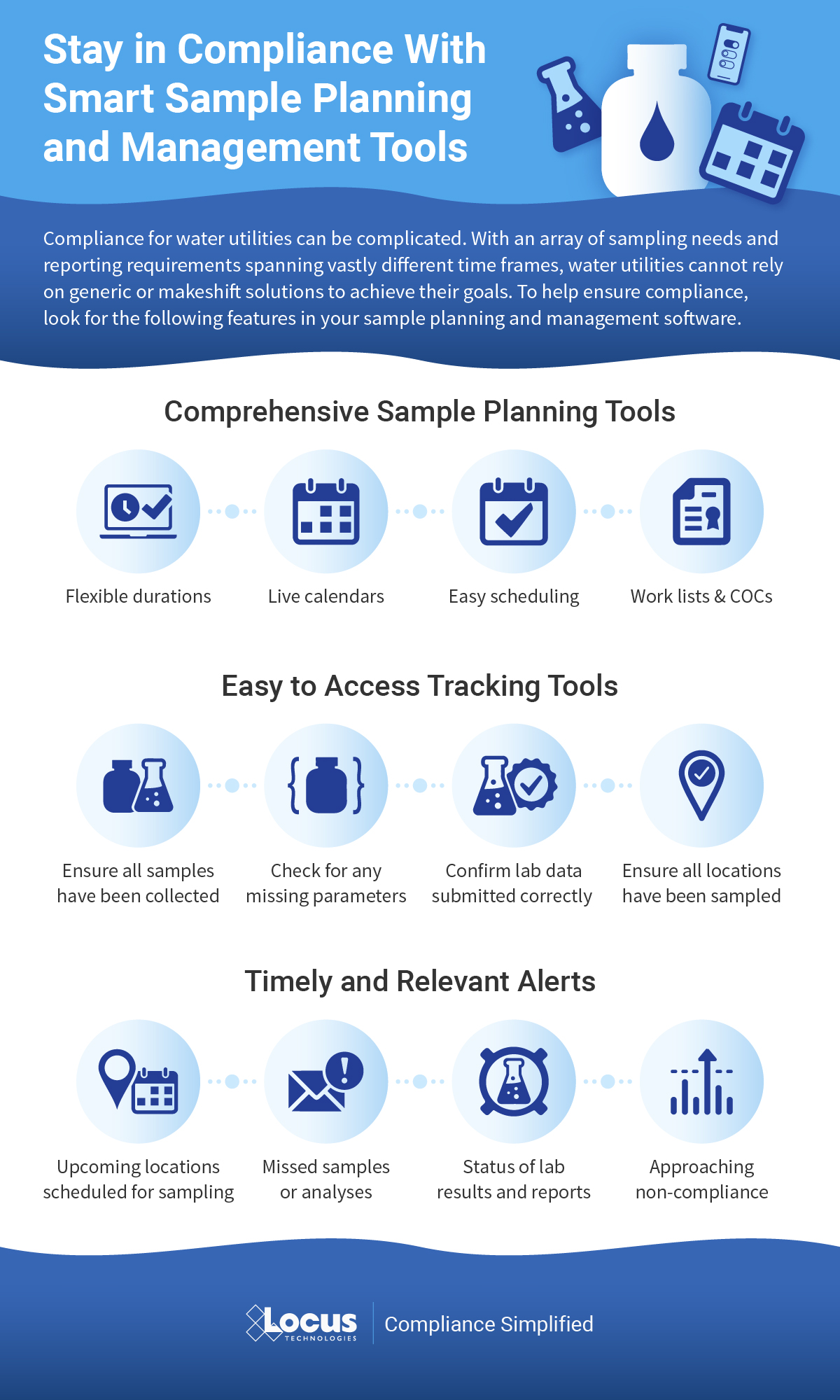Where Have My Analyses Gone?
Knowing the status of your samples and analyses can aid when to start your report or research in EIM as well as…
Knowing the status of your samples and analyses can aid when to start your report or research in EIM as well as…
While Locus EIM users may be aware of the Sampling Plan Module (SPM), a customer may need more flexibility to support the process of planning samples and analyses.
Looking ahead to 2025, a range of transformative trends are expected to shape the landscape of EHS compliance and sustainability.
Join us in looking back on the most exciting new and improved features added to Locus Platform during 2024!
Let’s look back on the most exciting new and improved features added to the Locus EIM application during 2024!
When looking for a GHG reporting program, there is one element that is typically overlooked. This short video gives us more insight.
2022 has given us a wealth of new features and growth! Both of our platforms have undergone improvements to enhance our client’s user experience. Let’s look at all the new features for 2022.

1. New Site Metrics dashboard allows immediate visibility into your data with clickable mapping. This is especially powerful for customers with multiple sites where they want to keep track of site activity and usage.
2. Finding data can sometimes be overwhelming especially when you have hundreds, if not thousands, of locations and numerous analytical parameters to review. Locus added advanced database search tools to support multiple search terms and ‘exact match’ searches, making it easy to find exactly what you want with a couple of key words and a click. Never has finding the right results from large complex datasets been so easy.
3. Locus has enhanced its API functionality to enable easier integration with external BI tools, including Tableau, PowerBI, and other apps. Now, customers that rely on external business analytical tools will have quick and easy access to data to combine with other internal data sources.
4. Locus document management has been taken to the next level by allowing customers to link documents from any external library directly into their sites, monitoring locations, samples, and more. This means with a simple click, users can go to lab reports, regulatory reports, and any other current or historical document associated with the site. If you are using SharePoint, for example, to manage documents – they can be accessed directly from Locus software. Document access and security will be preserved by existing document library access controls.
5. 2022 was the year of “help”. In addition to the advanced search, Locus added a new Help Browser to provide access to comprehensive documentation for every feature of the software. It is similar to the familiar “site map”, only the links take you to help content. With this new feature, users can view help in a single location vs having to access the information on each individual screen. For new users, or infrequent users, this will be their new favorite feature.

1. Locus’ Survey/Questionnaire tool enables you to securely & easily obtain data globally without the burdens of training or maintaining user lists. The survey system effortlessly supports data entry from external organizations (such as suppliers) or even occasional users internal to your organization, with a simple link click.
2. Locus released a new pivot table tool that enables you to perform full data analysis on any query in the system. Data may be grouped and organized by any value. Output options include bar charts, heatmaps, tables, area charts, scatter charts, and tree maps. In support of the output options, Locus has improved the ability for users to create dashboards more easily.
3. Complex inspection and audit forms require branching, sophisticated, scoring, and automated responses. Locus added new question types to its inspection/ audit module, including conditional questions based on responses to one or more previous questions. Locus augmented the scoring calculation mechanism and automated creation and tracking of corrective action.
4. In today’s world, users need access to environmental data on the go. Locus augmented its mobile offerings to include configurable layouts for mobile users, with compact forms specially designed for smartphone and tablet access.
5. Today’s managers want immediate access to the data they need. Locus’ new Landing Page feature makes it simple to configure the dashboards, bookmarks, and record lists. This enables the user to review just the areas they need to see and navigate efficiently to complete the work.
Let’s look back on the most exciting new features and changes made in EIM, Locus’ environmental data management software, during 2020!
Imagine the time savings and the simplicity of having your regulatory requirements all lined out for the year without having to worry about missing required samples. For water utilities, this is especially valuable given the strict schedules and public health implications of missing sampling events. Locus sample planning streamlines repetitive sampling, such as required samples for drinking water or monitoring wells. Any sampling events can be planned and reused repeatedly, even with tweaks to the schedule for the samples to be collected. We’ve outlined some key features of Locus sample planning in this infographic.

MOUNTAIN VIEW, Calif., 18 February 2021 — Locus Technologies (Locus) is pleased to announce that The City of Hillsboro Water Department, Oregon has selected Locus EIM to centralize their water data management. Hillsboro Water will utilize Single Sign-On (SSO) for added security and Locus Mobile for field data collection.
Locus EIM is a leading cloud solution for streamlining water quality data. First developed in 1999, Locus EIM was the first SaaS solution for managing analytical data. Locus EIM is a robust solution for planning, collecting, analyzing, and reporting environmental data.
Hillsboro Water manages four public water systems (Hillsboro, Cherry Grove, Butternut Creek, and the Joint Water Commission) for almost half a million customers, as well as Barney Reservoir. Locus EIM will be used to enhance the tracking and managing of Hillsboro Water’s water quality data, coordination of regulatory requirements, and to aid in making data-driven decisions.
“Locus EIM allows us to easily plan, record, QA/QC, and manage our water quality data collected from many different labs and routine field sampling. We are excited to have a software that helps us to quickly make data-based decisions to ensure safe and reliable drinking water for our rapidly growing community,” said Sarah Honious, Water Quality Program Coordinator, City of Hillsboro.
“The City of Hillsboro Water Department has a complex and technical set of water quality and regulatory sampling protocols. By utilizing Locus EIM, they can now make key decisions based on the analysis of their data, improving the daily lives of their customers,” said Wes Hawthorne, President of Locus.
ABOUT THE CITY OF HILLSBORO WATER DEPARTMENT
The City of Hillsboro, through its appointed three-member Utilities Commission, owns and operates a municipal drinking water system that serves more than 80 percent of Hillsboro residents and businesses. Its delivery of clean, reliable water protects public health, enables emergency fire protection, and supports the City’s economic vitality. Learn more at Hillsboro-Oregon.gov/Water.
299 Fairchild Drive
Mountain View, CA 94043
P: +1 (650) 960-1640
F: +1 (415) 360-5889
Locus Technologies provides cloud-based environmental software and mobile solutions for EHS, sustainability management, GHG reporting, water quality management, risk management, and analytical, geologic, and ecologic environmental data management.
